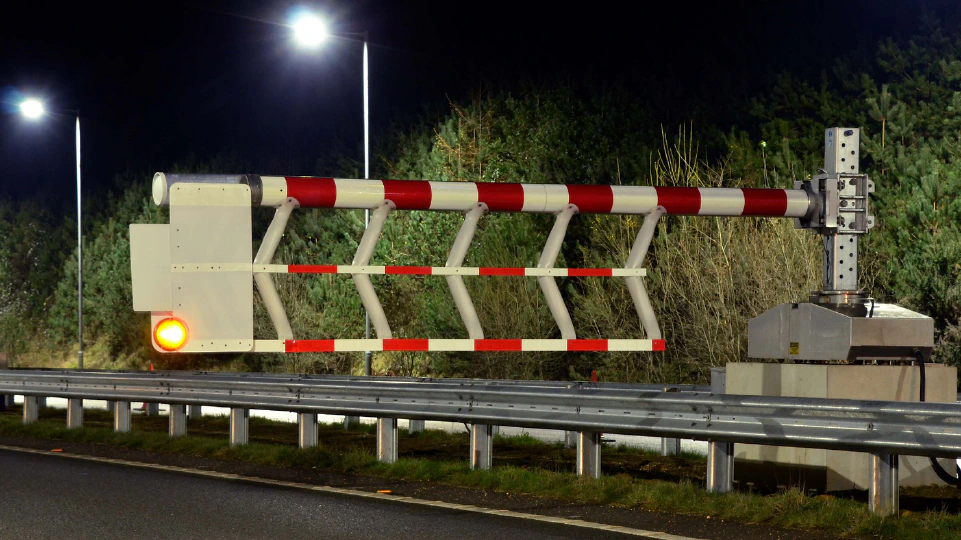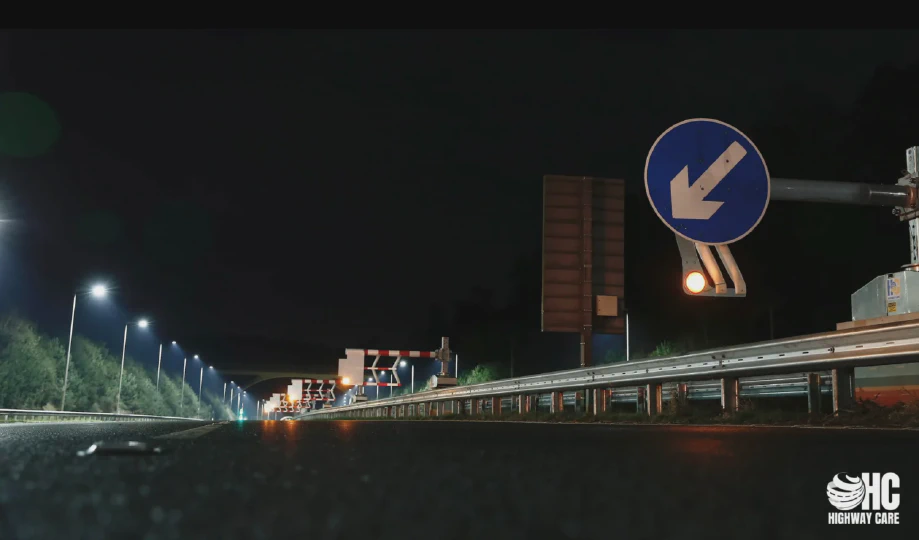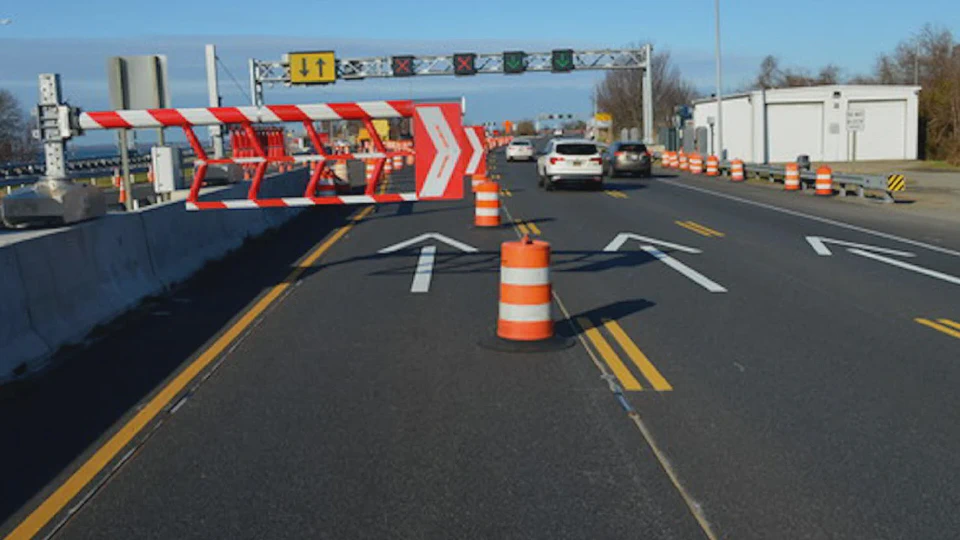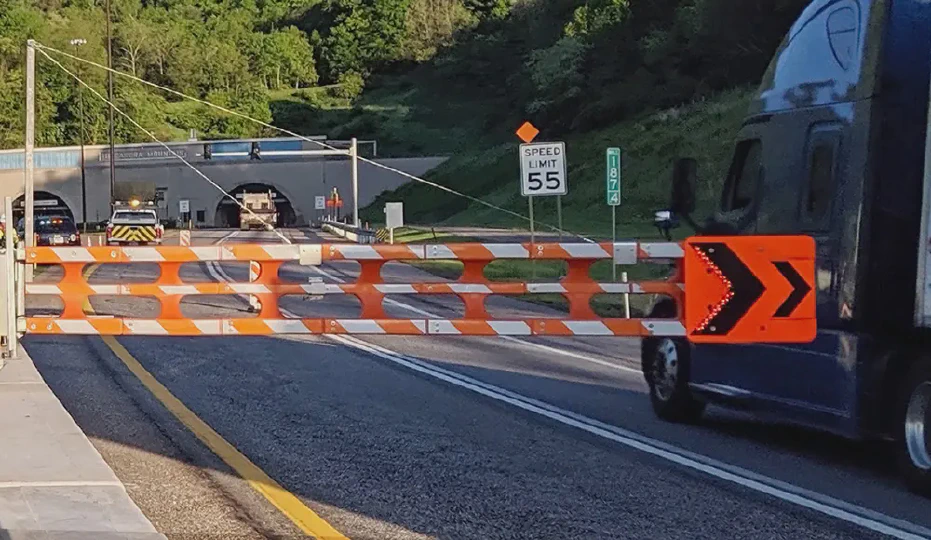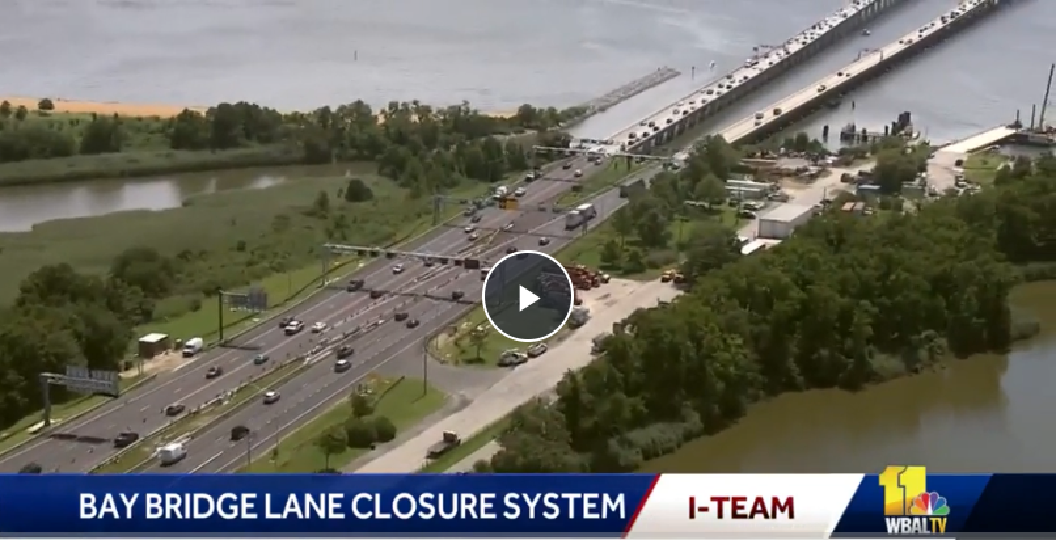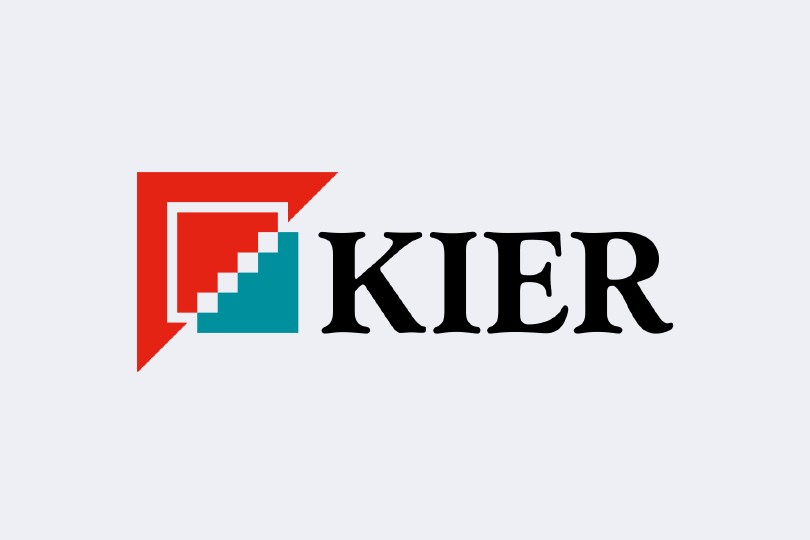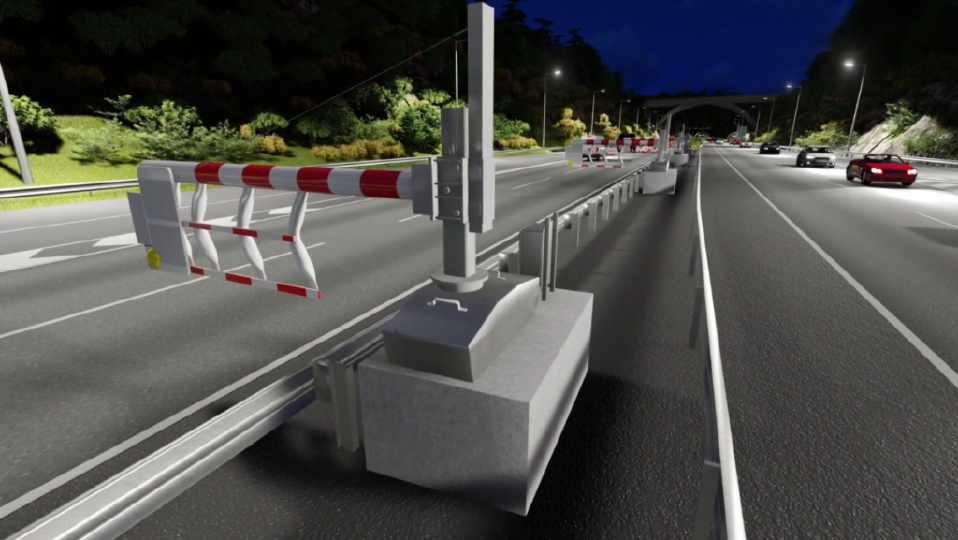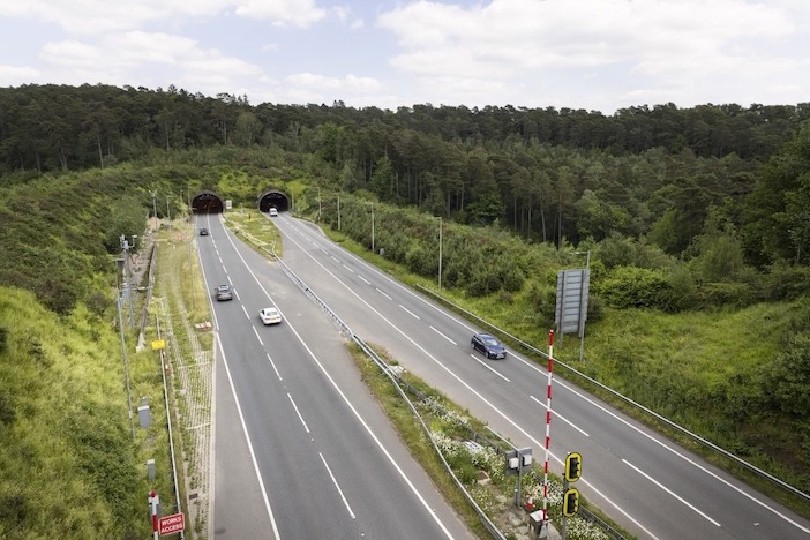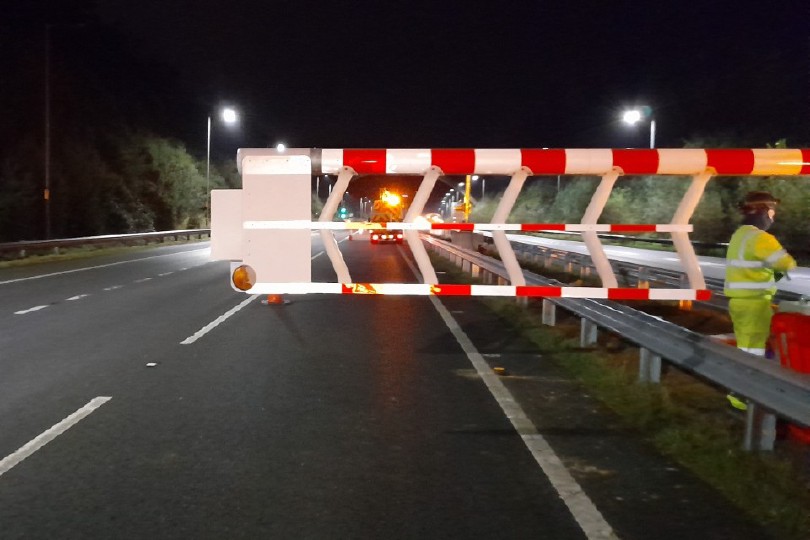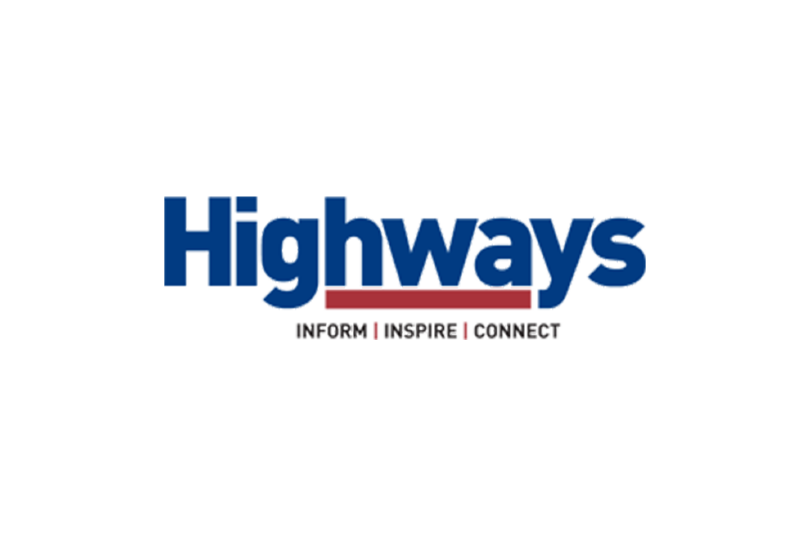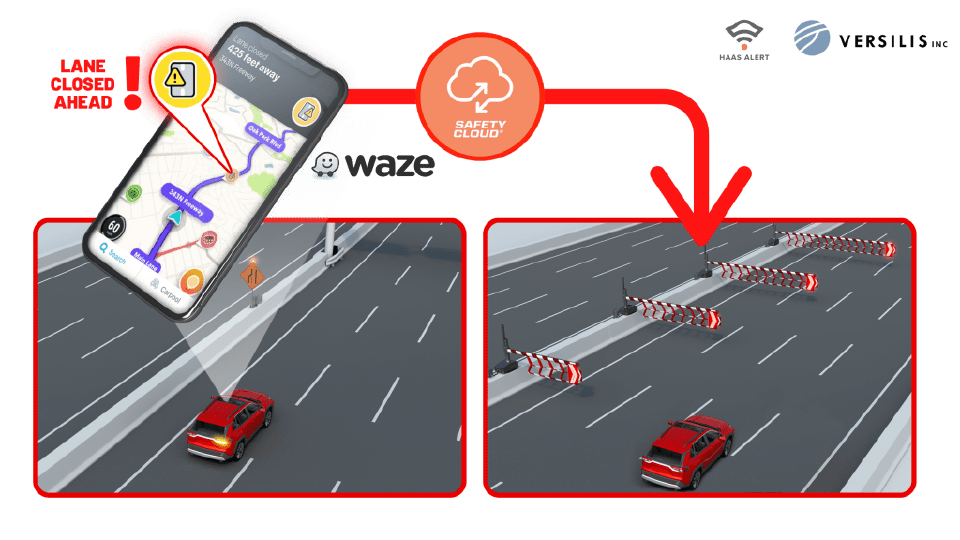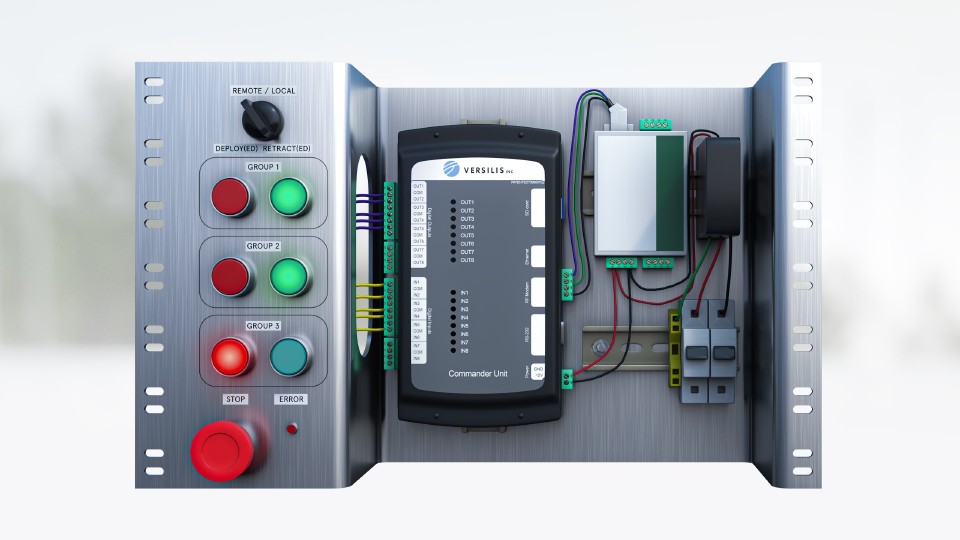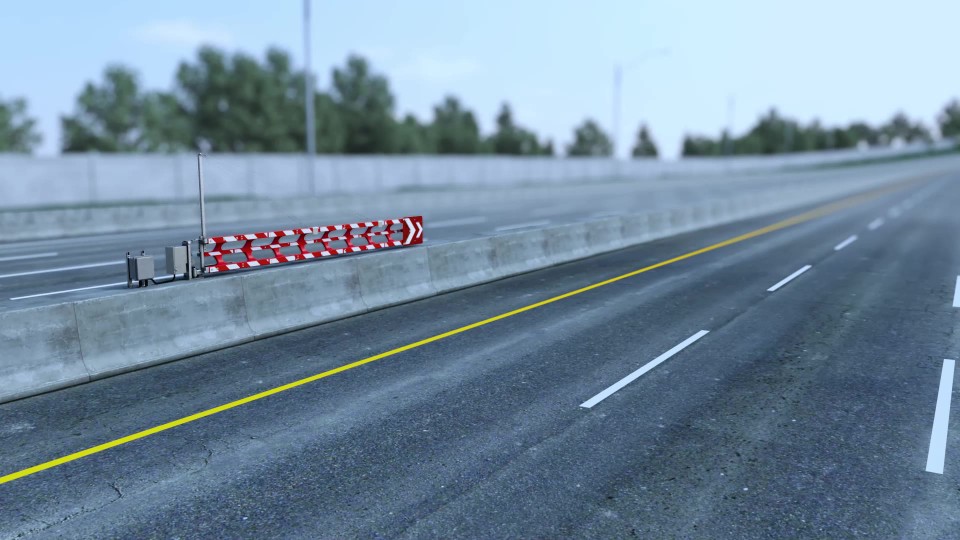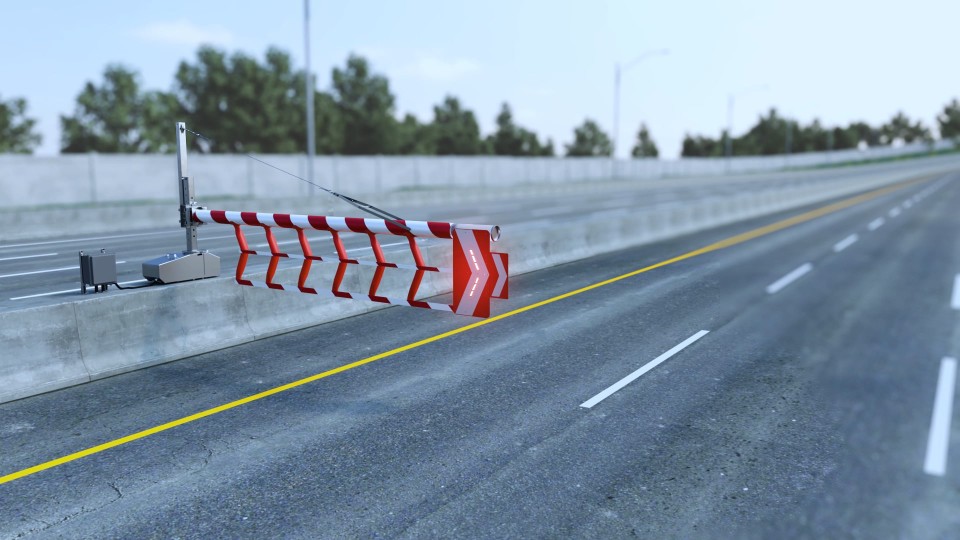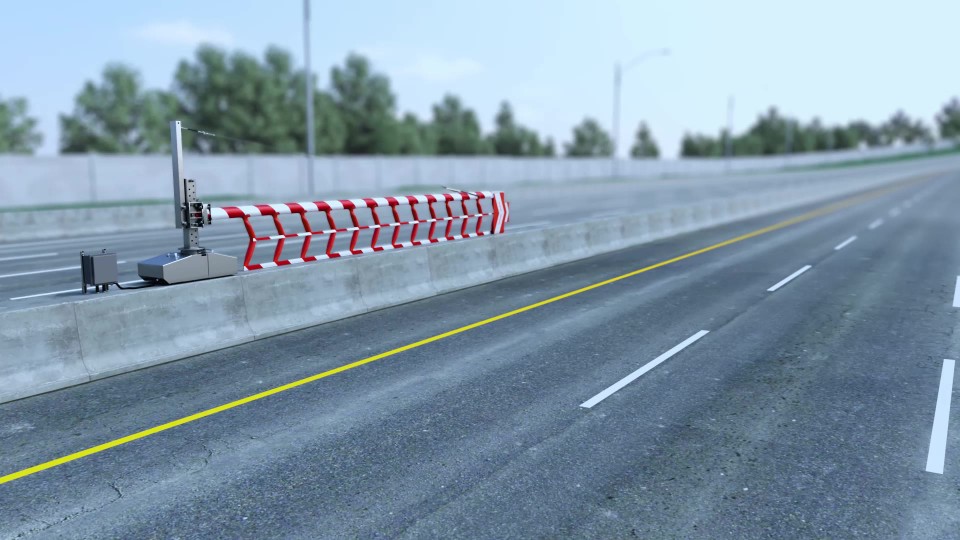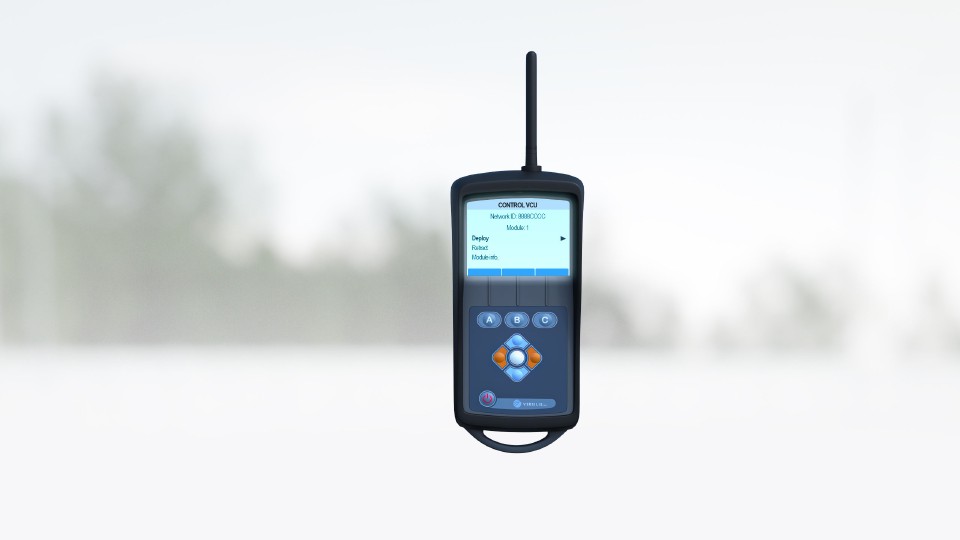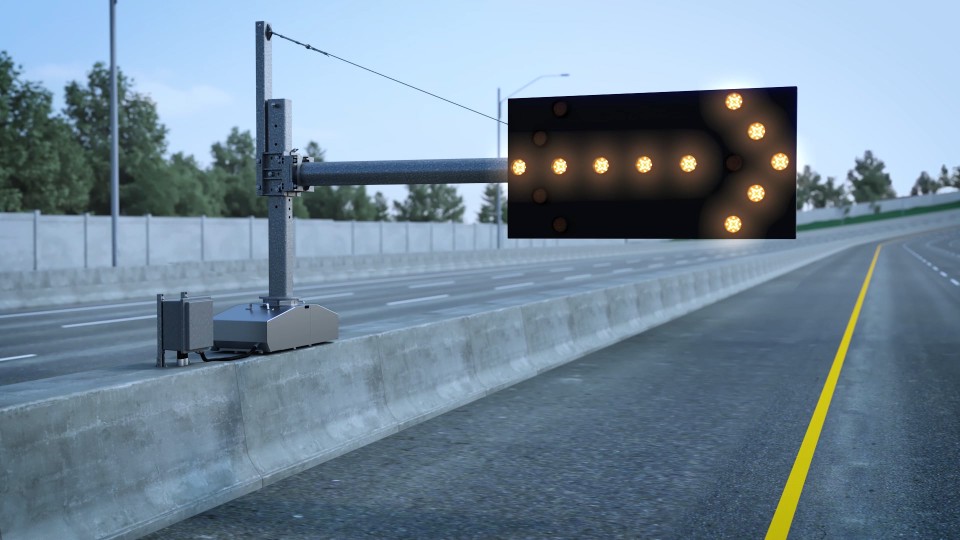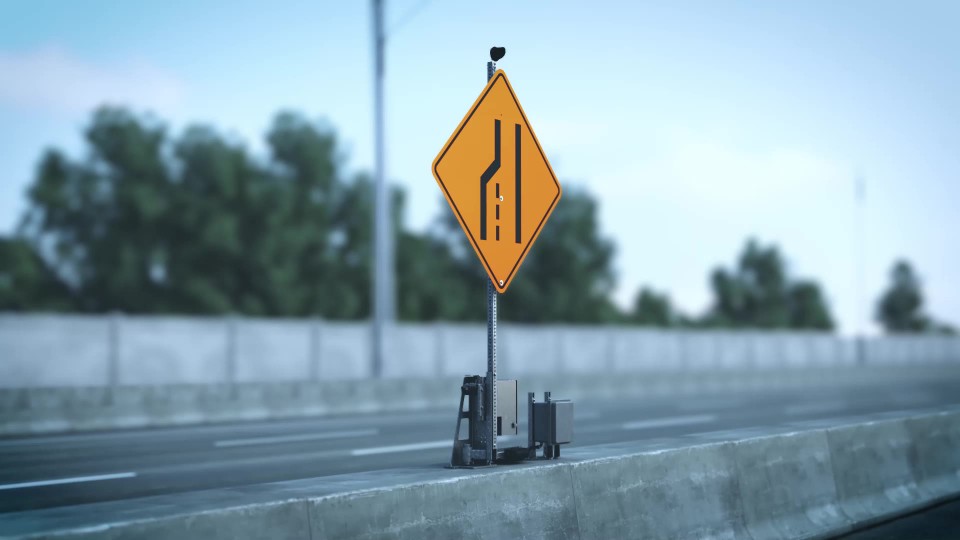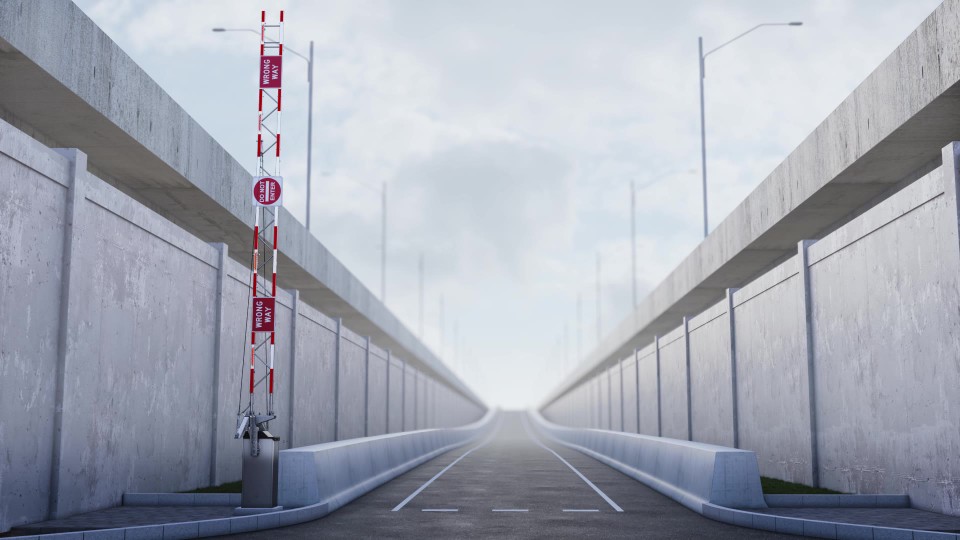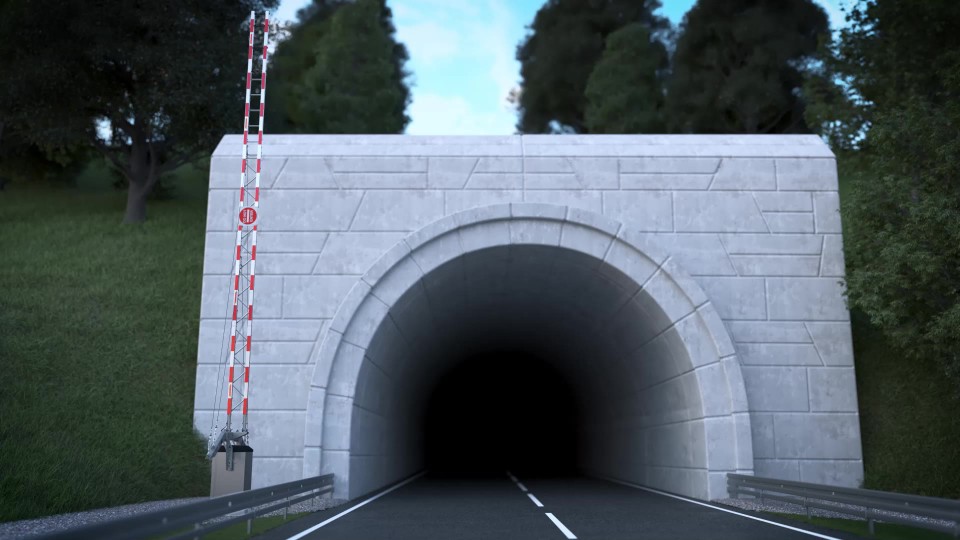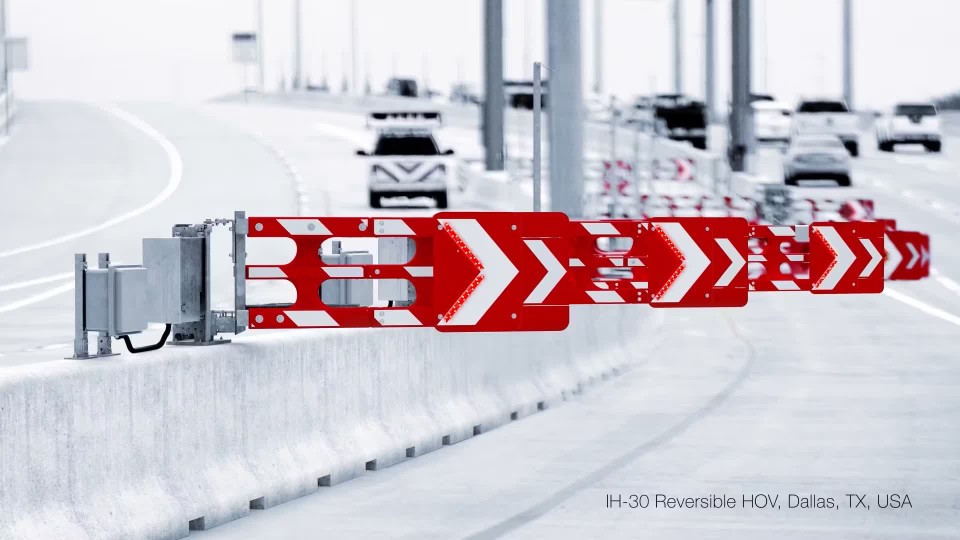
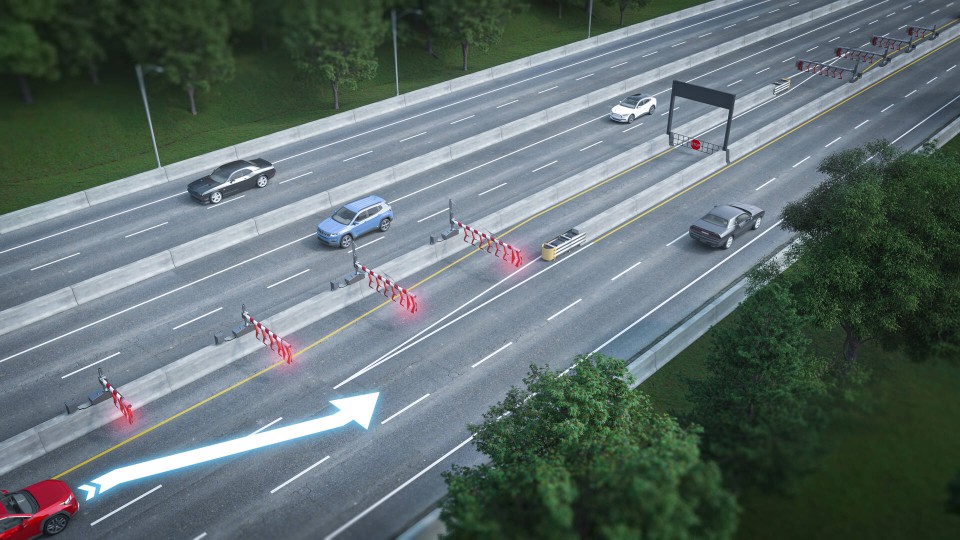
What are Reversible Lanes?
Reversible lanes are designated highway lanes designed to reduce congestion by switching the direction of traffic flow during peak travel times. Reversible lanes allow road authorities experiencing heavy directional traffic to increase roadway capacity at certain times of the day. They are typically positioned in the median of freeway facilities separated from other lanes by concrete barriers. Reversible lanes are generally used on a regular fixed schedule based on daily commuting patterns to provide consistency for road users. Exclusive slip ramps are used to provide terminal access to reversible lanes. They are equipped with automated barrier gates to manage traffic flow into and out of the lanes and to prevent vehicles from entering the lanes in the wrong direction.
Reversible Lane Operational Challenges
Agencies face several challenges as part of reversible lanes’ operations:
- Safety concerns for motorists during reversal operations
- Labor intensive and time consuming because of repetitive traffic control operations
- Complexity of daily surveillance and lane or ramp reversal activities
Benefits of Automated Reversible Lane Operations?
The use of automated warning signage and gates is essential for the safe operation of reversible lane facilities. Road authorities operating reversible lanes use Versilis traffic gates and signs to:
- Improve motorist safety by physically preventing wrong way movements
- Create a safe environment for all road workers by reducing exposure
- Reduce time required to reverse lanes with fully automated operations
- Increase motorist compliance with highly visible gates and advance warning signage
- Reduce traffic control costs and improve staff resources deployment during reversal activities
Is your agency looking for solutions to improve the safety and efficiency of your reversible lane operations?
Versilis is proud to support road authorities in their efforts to enhance motorist and worker safety while improving the efficiency of reversal activities.
Learn how agencies across the United States have improved their reversible lane operations in partnership with Versilis by visiting our project pages.
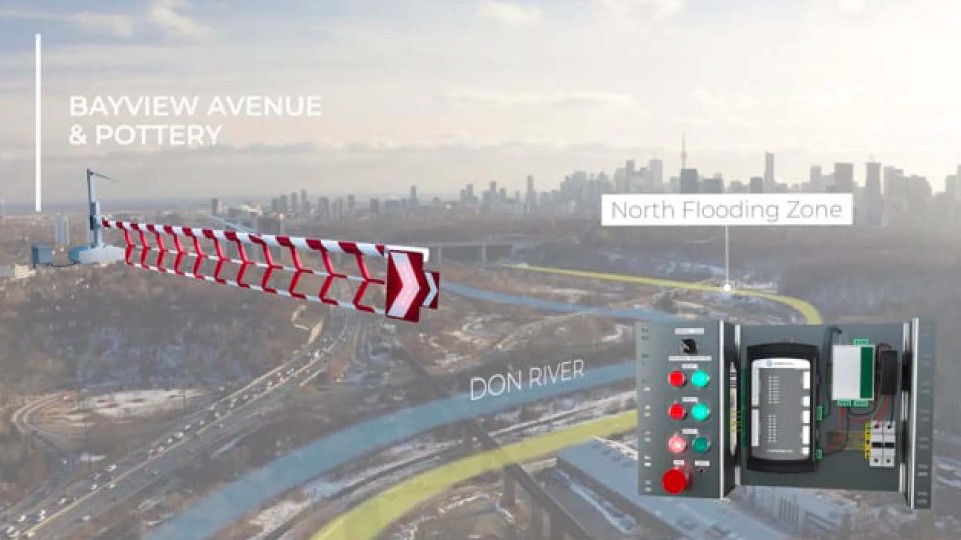
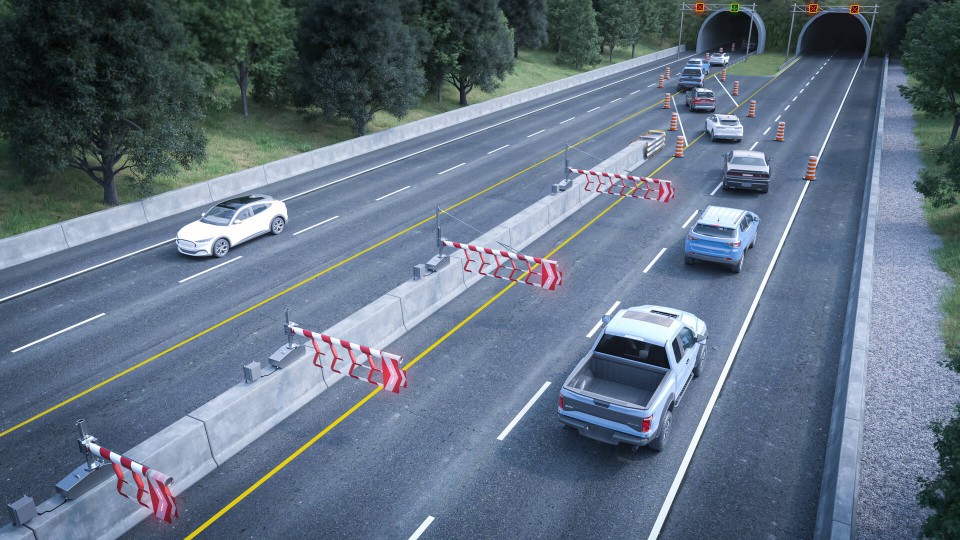
What is Bridge and Tunnel Lane Management?
Lane control management at bridge or tunnel approaches can be critical. Traffic lane reconfiguration requires heavy traffic control. Therefore, an automated system represents a safe and efficient alternative to manual setup and dismantling of traffic control equipment. In this context, a series of automated gates and signs are deployed at tunnel and bridge approaches as part of contraflow lane operations, planned maintenance, incident management, or construction. Warning gates and signs are used by operators to send a clear message to motorists that a specific lane or access point is closed. These ITS devices are designed to manage traffic flow efficiently when changing lane configuration.
Bridge & Tunnel Managed Lanes – Operational Challenges
Agencies face several challenges as part of bridge and tunnel traffic control or managed lane operations:
- Safety concerns for workers and road users during reconfiguration or lane closure process
- Labor intensive and time-consuming setup because of repetitive traffic control operations
- Confusing directions for motorists that are unfamiliar with managed lane activities
Benefits of Automated Bridge & Tunnel Managed Lanes
Automated warning signage and gates are a great solution for the safe operation of bridge and tunnel managed lane operations. Road authorities operating bridges and tunnels use Versilis traffic gates and signs to:
- Create a safe environment for all road workers
- Increase motorist compliance and safety with highly visible crash tested gates
- Reduce traffic control costs and improve staff resources deployment
- Reduce time required to setup and breakdown closures with fully automated operations
- Reduce prolonged maintenance of traffic (MOT) operations
Is your agency looking for solutions to improve the safety and efficiency of your bridge and tunnel managed lane operations?
Versilis is proud to support road authorities in their efforts to enhance motorist and worker safety while improving the efficiency of bridge and tunnel managed lane activities.
Learn how agencies across the United States have improved their bridge in tunnel traffic control in partnership with Versilis by visiting our product pages.
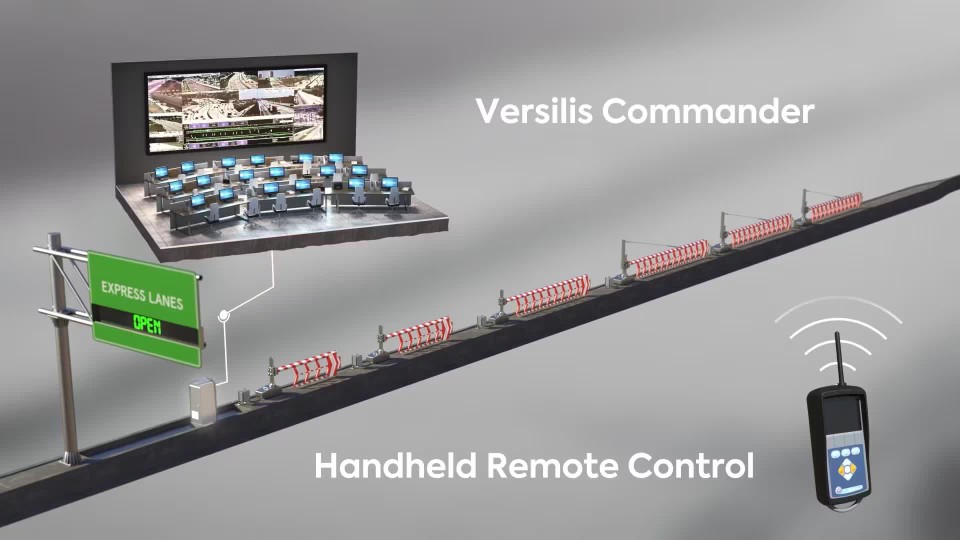
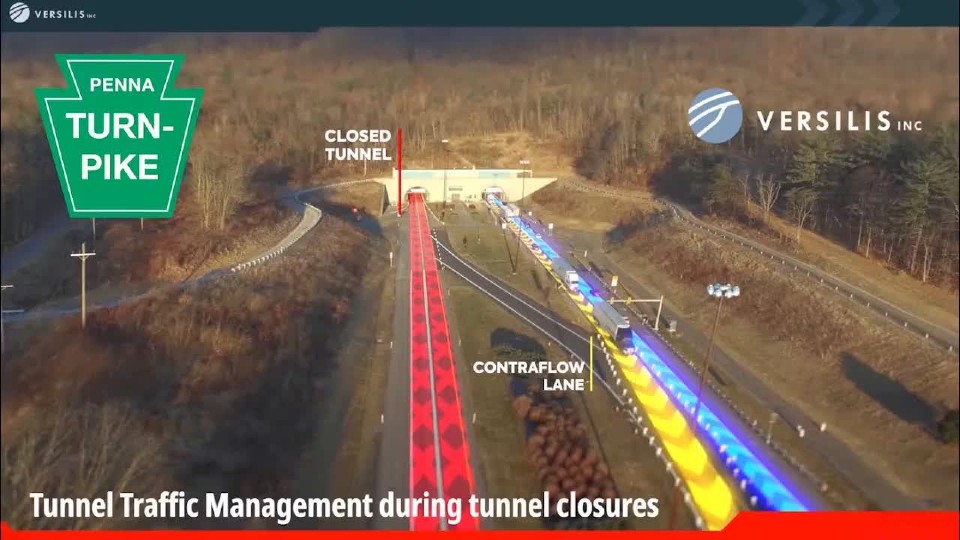
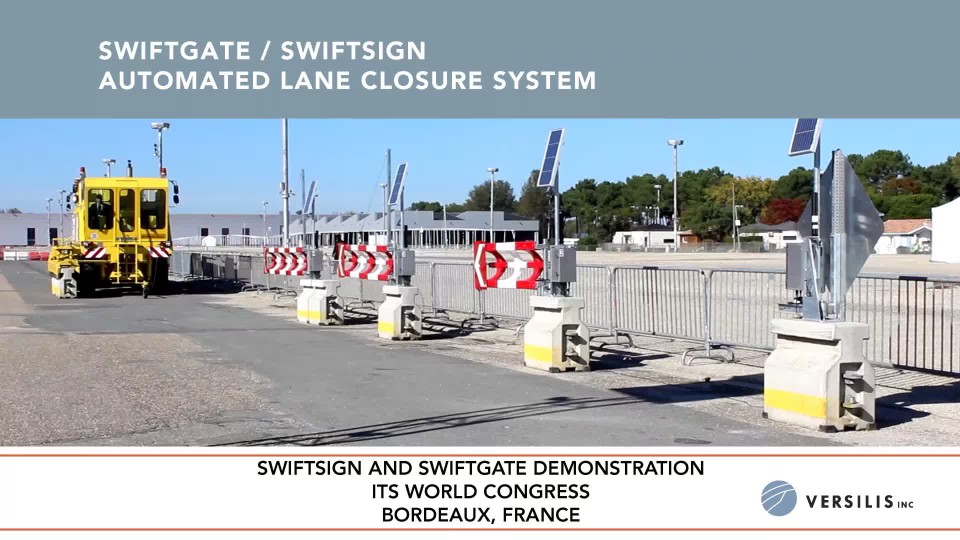
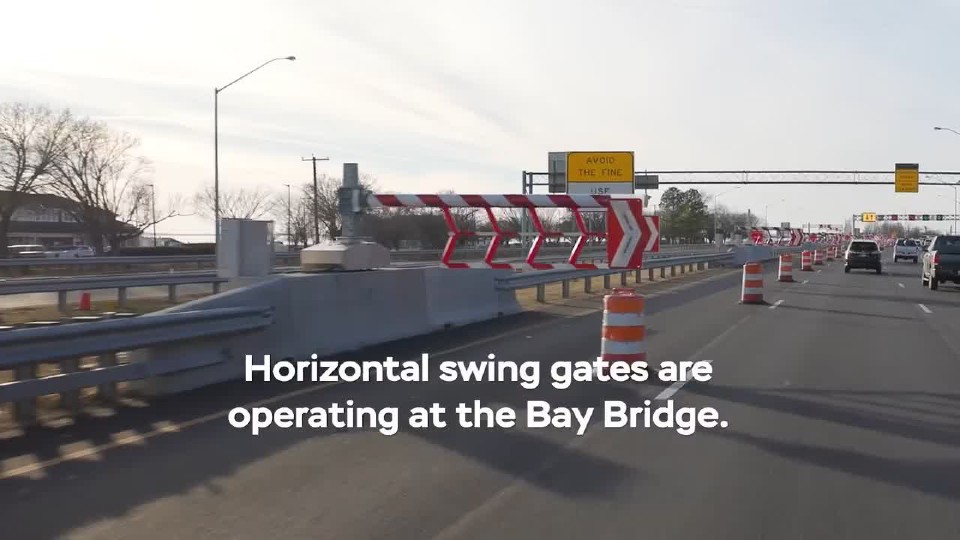
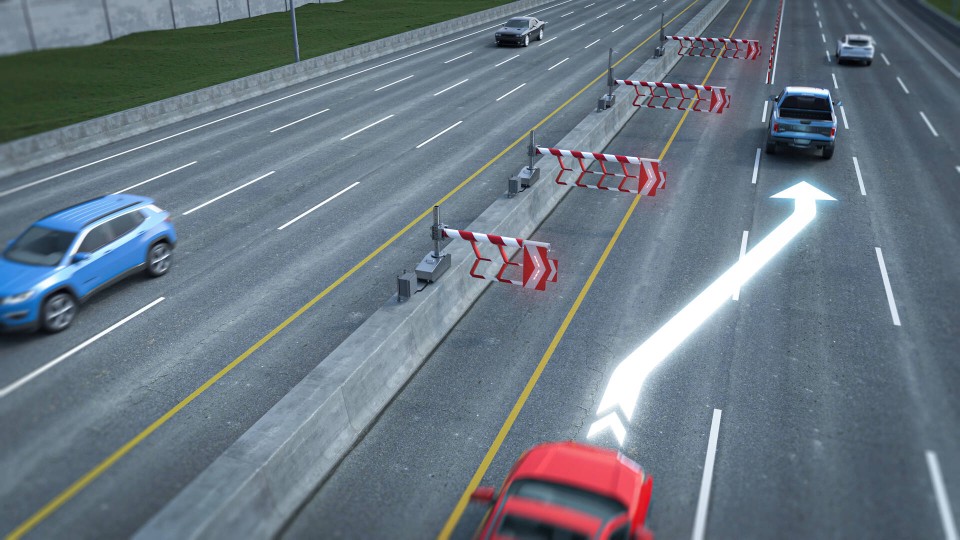
What are Express Lanes?
Express Lanes are designated highway lanes designed to increase roadway capacity to offer drivers a faster and more reliable commute option during peak periods. Express lanes are built in addition to general-purpose lanes to help road authorities manage traffic more efficiently and alleviate congestion. Express lanes can be high-occupancy toll (HOT) lanes, high-occupancy vehicle (HOV) lanes, or an alternative for solo drivers willing to pay a toll to bypass congestion. Toll agencies can also rely on dynamic pricing to maintain free-flowing travel and manage the express lanes.
Express Lanes Operational Challenges
Agencies face several challenges as part of express lanes closure operations:
- Safety concerns for workers and responders
- Impact on peak period performance caused by motorist violations during active road closures
- Labor intensive and time consuming
- Limited access for emergency vehicles responding to incidents
Benefits of Automated Express Lane Closures
Road authorities are implementing automated road closures using Versilis traffic gates and signs to:
- Create a safe environment for both first responders and road workers
- Physically prevent motorists from entering the express lanes
- Close and reopen express lanes faster with fully automated operations
- Maintain free flow conditions (>45mph) to improve trip reliability
- Reduce prolonged maintenance of traffic operations
- Reduce traffic control costs and improve staff resources deployment
- Increase motorist compliance with highly visible gates and advance warning signage
- Increase emergency vehicle safety when accessing the express lanes
Is your agency looking for solutions to improve the safety and efficiency of your express lane operations?
Versilis is proud to support road authorities in their efforts to enhance worker and motorist safety while improving the efficiency of maintenance operations and traffic incident management.
Learn how agencies across the United States have improved their express lane operations in partnership with Versilis by visiting our project pages.
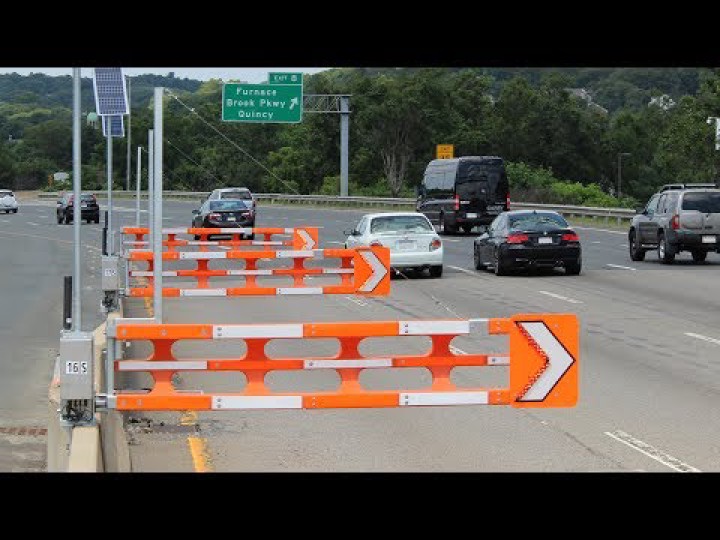
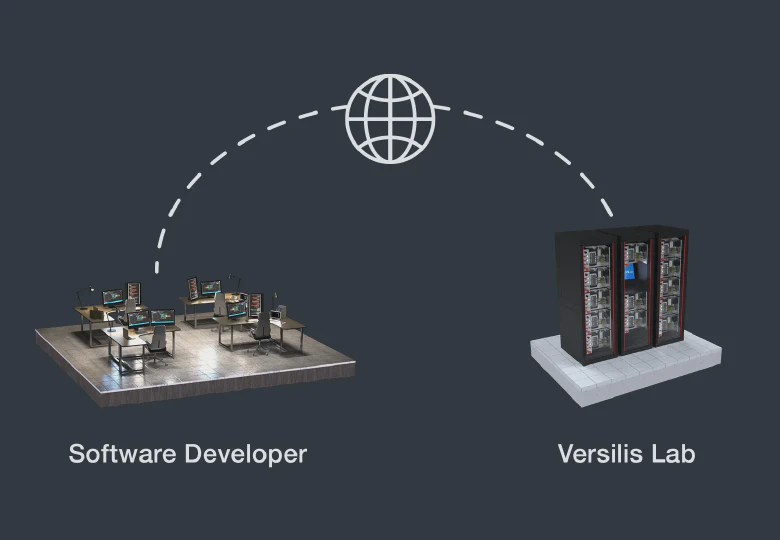
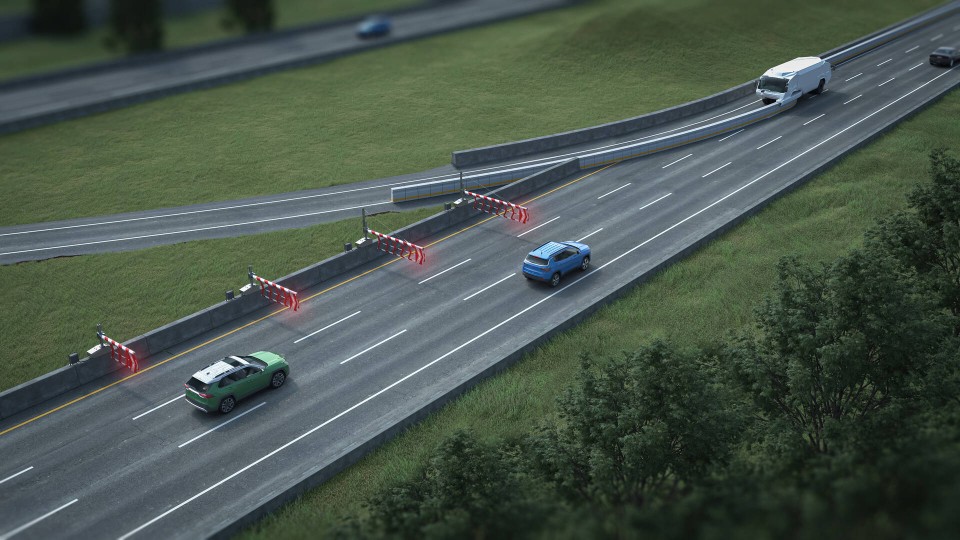
What are Movable Barrier Operations?
Barrier transfer machines can be used by road authorities experiencing heavy peak period directional traffic as part of contraflow lane activities to control traffic and improve worker safety. Contraflow designs typically require the use of a barrier-moving machine to borrow an off-peak direction lane. An additional peak direction lane is created using a moveable concrete barrier separating the contraflow lane from opposing flows of traffic. Contraflow lanes implementation is only possible when there is unused off-peak direction capacity. Barrier transfer machines can also be deployed by agencies during road construction allowing for lane closures during off-peak hours to create a safe work zone. Movable barrier operations aim to improve traffic flow by quickly and efficiently changing lane configuration on a freeway. Barrier-moving machines create entrance and exit points for contraflow lanes while Versilis warning gates and signs are deployed upstream of the closure to alert motorists of the new configuration and to channelize vehicles into the new traffic pattern. Versilis traffic gates and signs allow the barrier transfer machine to shift the movable barrier to open a contraflow lane in the opposite direction. The system is then retracted to allow traffic to enter the traffic lane.
Contraflow Lanes Challenges
Agencies face several challenges as part of movable barrier operations, especially with non-automated systems:
- Safety concerns for workers during reconfiguration or lane closure process
- Confusion for motorists that are unfamiliar with contraflow operations
- Labor intensive and time consuming because of repetitive traffic control operations
Benefits of Automated Lane Closures for Movable Barrier Operations?
The use of automated warning gates and signs in combination with movable barriers is used to create a safe and efficient contraflow operation. Road authorities operating contraflow lanes with barrier-moving machines use Versilis traffic gates and signs to:
- Reduce time required to setup and breakdown closures with fully automated operation
- Reduce traffic control costs and improve staff resources deployment during contraflow activities
- Create a safe environment for all road workers by reducing exposure
- Increase motorist compliance with highly visible gates and advance warning signage
Is your agency looking for solutions to improve the safety and efficiency of your movable barrier operations?
Versilis is proud to support road authorities in their efforts to enhance motorist and worker safety while improving the efficiency of contraflow activities using barrier transfer machines.
Learn how agencies across the United States have improved their contraflow lane operations in partnership with Versilis by visiting our project pages.
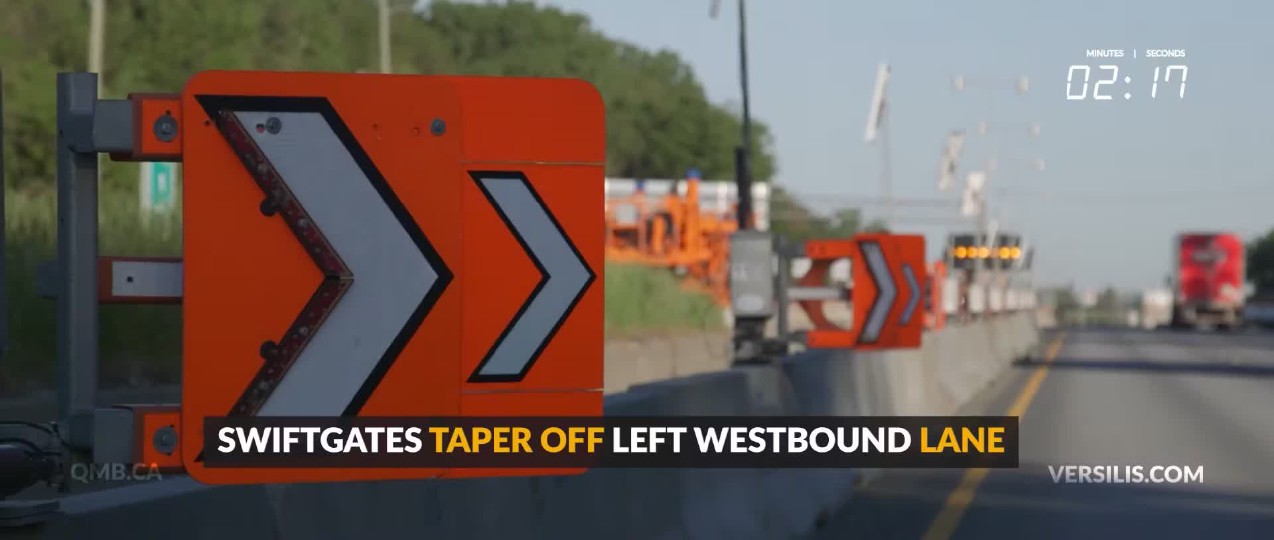
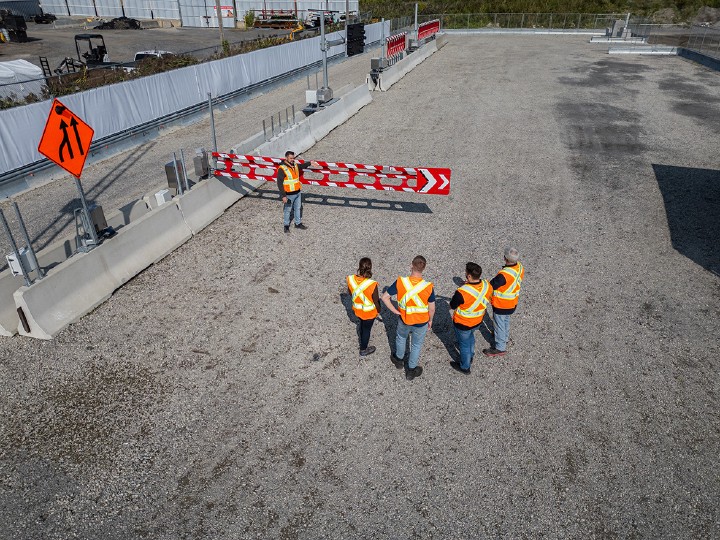
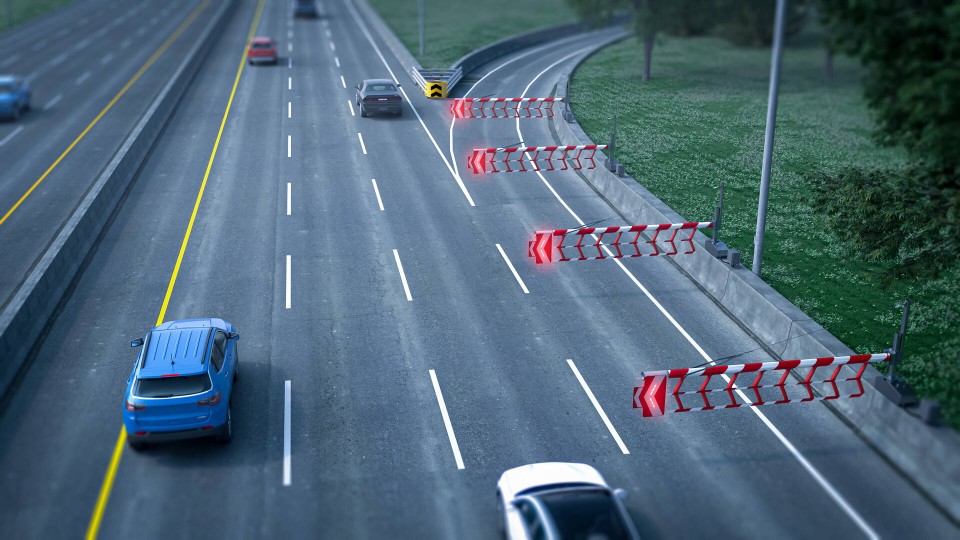
What is Ramp Access Control?
Automated gates and signs can be used to control highway ramp accesses. The ability to easily open and close ramps increases traffic control efficiency. Ramp closures are traditionally performed manually, requiring maintenance of traffic to be deployed at various entry points to divert traffic and restrict access to the facility. Execution of such operations requires significant manpower and takes a considerable amount of time. Ramp closures automation is an innovative strategy used by road authorities to alert drivers of upcoming ramp closures and prevent entry to closed access points. In certain cases, ramp closure automation is also used to help maintain free flow by preventing vehicles from accessing a corridor section when a predetermined traffic threshold has been reached.
Ramp Closure Operational Challenges
Agencies face several challenges as part of manual ramp closure operations:
- Safety concerns for workers and motorists
- Labor intensive and time consuming because of repetitive traffic control operations
- Confusion for motorists that are rerouted
Benefits of Automated Ramp Closures
Road authorities are implementing automated road closures using Versilis traffic gates and signs to:
- Create a safe work environment for all road workers
- Physically prevent motorists from entering closed ramps
- Close and reopen ramps faster with fully automated operation
- Reduce prolonged maintenance of traffic operations
- Reduce traffic control costs and improve staff resources deployment
- Increase motorist compliance with highly visible gates and advance warning signage
Is your agency looking for solutions to improve the safety and efficiency of ramp closures?
Versilis is proud to support road authorities in their efforts to enhance motorist safety while improving the efficiency of ramp access control operations.
Learn how agencies across the United States have improved their ramp closure operations in partnership with Versilis by visiting our project pages.
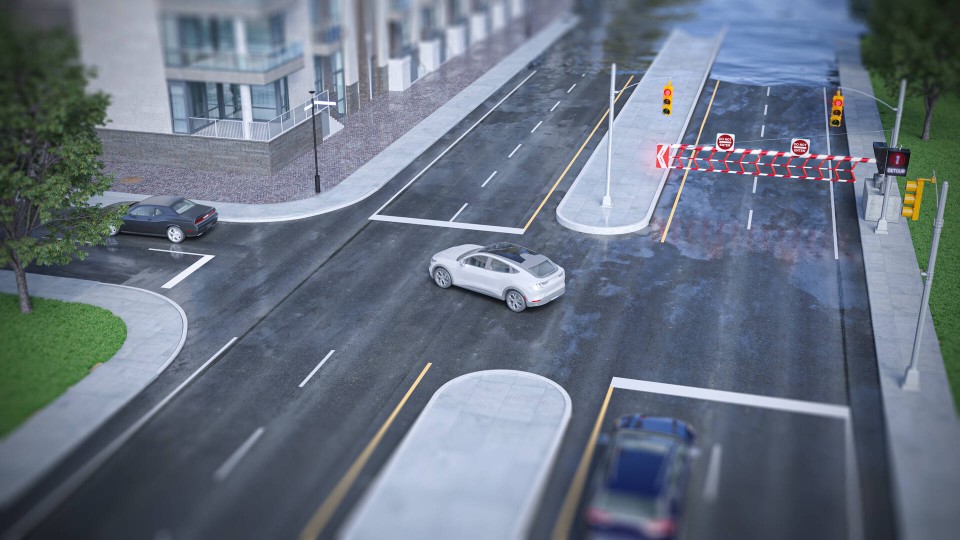
What is an Automated Flood Management System?
Automated flood management systems are implemented by road authorities to improve road closure operations during extreme flood events. Road closures are traditionally performed manually, requiring responders to be dispatched urgently at various entry points to divert traffic and restrict access to flooded roadways. Execution of such operations requires significant manpower and takes a considerable amount of time. Automated closures in flood-prone areas are generally performed remotely from the Traffic Management Center allowing authorities to respond faster when extreme weather events occur. Automated operations reduce the risk of drivers being trapped in flooded roadways and allow agencies to alert road users of emergency detour routes according to predetermined scenarios of operations. Versilis warning gates & signage solutions are integrated to automated flood management systems requiring various ITS equipment such as cameras, Infrastructure-to-Vehicle (I2V) digital alerting tools, and flood detection sensors. Automated road closure systems can be used as part of emergency response strategies for various types of extreme weather events such as hurricanes, winter storms, wildfires, and tornadoes.
Flooded Roadway Manual Closures — Operational Challenges
Road authorities face several challenges as part of flood events road closure operations:
- Safety concerns for motorist and responders
- Labor intensive and time consuming
- Confusion for motorists presented with unfamiliar driving conditions
Benefits of Automated Flood Warning Systems
The ability to open and close flooded roads remotely is a powerful advantage for road authorities to improve safety and efficiency during flood events. Transportation authorities are implementing automated road closures using Versilis traffic gates and signs to:
- Improve motorist safety by physically preventing entry to flooded zones
- Reduce time required to deploy road closures with fully automated operation
- Improve staff resources deployment and reduce operating costs
- Increase trip reliability with effective traffic redirection
- Create a safe work environment for all responders
Is your agency looking for solutions to improve the safety and efficiency of flood mitigation operations?
Versilis is proud to support road authorities in their efforts to enhance motorist safety while improving the efficiency of road closure operations during extreme weather events.
Learn how agencies across the United States have improved their extreme events emergency response and preparedness strategies in partnership with Versilis by visiting our project pages.
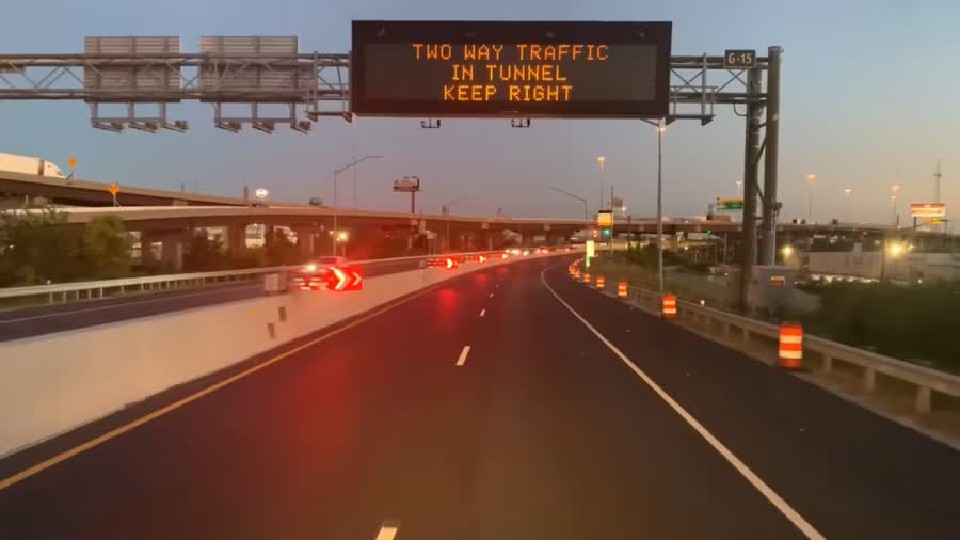
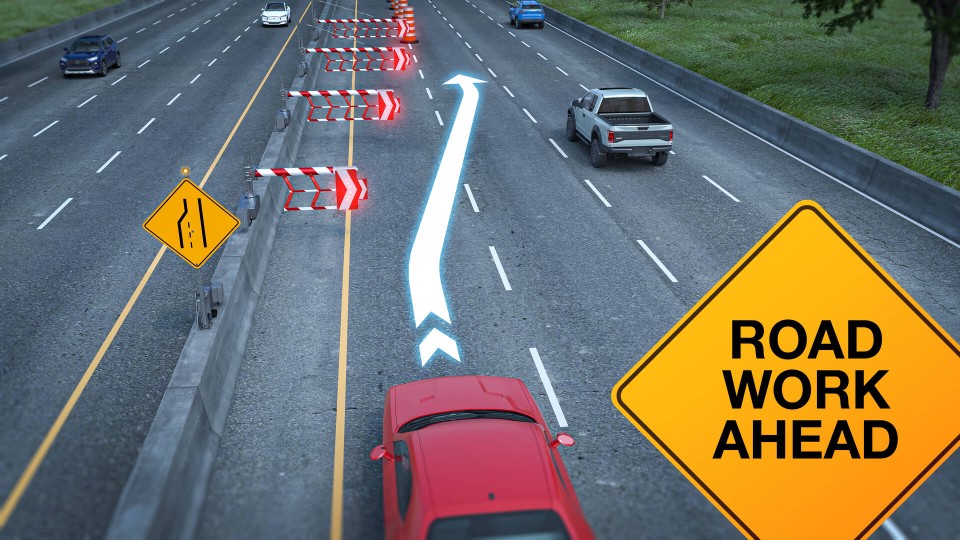
What is a Highway Work Zone?
A highway work zone is an area where roadwork is performed in a high speed facility. It generally involves lane closures and detours requiring the deployment of equipment such as channelizing devices, signs, barriers, pavement markings, and work vehicles. Maintenance of MOT operations in work zones are traditionally performed manually, and often occur at night to reduce impacts on daytime traffic and the likelihood of incidents. Considering the risks associated with freeway work zones, agencies are looking for solutions to increase worker safety and improve motorist compliance. Work zone automation is an innovative strategy used by road authorities to alert drivers of upcoming road or lane closures and prevent access to work zones more efficiently. Automated road closures require automated warning gates, used as channelizing devices, and various ITS equipment such as automated advance warning signage, cameras, illuminated pavement markers and Infrastructure-to-Vehicle (I2V) digital alerting systems. Work zones automation reduces worker exposure to live traffic and enhances road closures efficiency for long-term and repetitive road construction operations.
Non-automated Work Zone Operational Challenges
Agencies face several challenges as part of work zone road or lane closure operations:
- Safety concerns for workers
- Labor intensive and time consuming
- Confusing for motorists that are presented with unfamiliar driving conditions
Benefits of Automated Work Zones
The ability to open and close lanes using a simple handheld remote control is a powerful advantage for traffic companies and contractors to improve safety and efficiency while reducing costs. Road authorities are implementing automated work zone road and lane closures using Versilis traffic gates and signs to:
- Create a safe environment for all road workers
- Physically prevent motorists from entering work zones
- Reduce time required to setup and breakdown closures with fully automated operation
- Reduce prolonged MOT operations
- Reduce traffic control costs and improve staff resources deployment
- Increase motorist compliance with highly visible gates and advance warning signage
Is your agency looking for solutions to improve the safety and efficiency of your work zones?
Versilis is proud to support road authorities in their efforts to enhance worker and motorist safety while improving the efficiency of work zone operations.
Learn how agencies across the United States have improved their work zone operations in partnership with Versilis by visiting our project pages.
